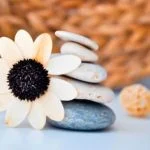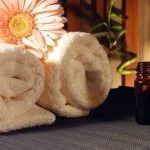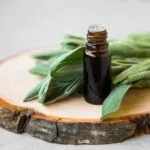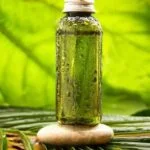Aromatherapy has been used for centuries as a natural way to promote physical, mental, and emotional well-being. And one popular method of enjoying the benefits of aromatherapy is through the use of a diffuser. In this article, we will discuss how to fill aromatherapy diffuser as well as provide an overview of the benefits and uses of aromatherapy.
Aromatherapy involves the use of essential oils extracted from plants to improve mood, soothe pain, and alleviate stress. These oils can be inhaled or applied to the skin in diluted form. A diffuser is a device that disperses these essential oils into the air, allowing their aroma and therapeutic properties to be experienced throughout a room. Using a diffuser can help create a relaxing atmosphere, purify the air, and even ward off insects.
There are several different types of aromatherapy diffusers available on the market today, each with its own unique method of dispersing essential oils. Understanding the differences between ultrasonic, nebulizing, heat, and evaporative diffusers can help you choose the best option for your needs. In the following sections, we will discuss how to properly fill these different types of diffusers with essential oils and water to maximize their effectiveness.
Different Types of Aromatherapy Diffusers
Aromatherapy diffusers come in different types, each with its own unique features and benefits. When choosing a diffuser, it’s important to consider factors such as convenience, effectiveness, and personal preferences. Understanding the differences between ultrasonic, nebulizing, heat, and evaporative diffusers can help you make an informed decision about which type is best for your needs.
Ultrasonic Diffusers
Ultrasonic diffusers are popular for their ability to disperse a fine mist of essential oil and water into the air using ultrasonic vibrations. These diffusers are easy to use and often come with additional features such as color-changing lights and timer settings. They are ideal for creating a relaxing ambiance at home or in the office.
Nebulizing Diffusers
Nebulizing diffusers work by using pressurized air to break down essential oils into tiny particles that can be dispersed into the air. This type of diffuser does not require water or heat, making it a great choice for those who want to experience the full therapeutic benefits of essential oils without dilution. Nebulizing diffusers are known for their strong scent output and effectiveness in large spaces.
Heat Diffusers
Heat diffusers use heat to gently warm and release essential oils into the air. While these diffusers are simple to operate and can be used without water, they may not be as effective in preserving the therapeutic properties of certain essential oils due to the use of heat. However, they are still a popular choice for those who prefer a subtle fragrance throughout their living space.
Evaporative Diffusers
Evaporative diffusers typically utilize a fan or natural airflow to disperse essential oils into the air. The oils are placed on a pad or inside a chamber where they evaporate quickly, releasing their aroma into the surrounding area. These diffusers are portable, affordable, and simple to operate, making them a convenient option for travel or use in small spaces.
Given these various options available on the market today, understanding how each type of aromatherapy diffuser works is crucial in determining which one would best suit your lifestyle and needs. Whether you’re looking for something quiet and compact or powerful and efficient, there is sure to be an aromatherapy diffuser that fits your preferences perfectly.
By carefully considering your specific requirements alongside each type’s features, you’ll be able to make an informed decision that will have you enjoying all the benefits aromatherapy has to offer.
Step-by-Step Guide on How to Fill Aromatherapy Diffuser
Aromatherapy diffusers are a popular and effective way to enjoy the benefits of essential oils in the comfort of your home or office. Whether you’re looking to relax, improve focus, or alleviate stress and anxiety, using a diffuser can help you achieve your desired results. In this section, we will provide a step-by-step guide on how to fill different types of aromatherapy diffusers with essential oils and water to ensure a satisfying aromatherapy experience.
First, let’s discuss how to fill an ultrasonic aromatherapy diffuser. These types of diffusers are easy to use and require a combination of water and essential oils. Begin by removing the cover of the water tank and adding water up to the designated fill line. Then, add 3-10 drops of your chosen essential oil into the water. Afterward, replace the cover and turn on the diffuser according to its specific instructions for use.
Next, we’ll explain how to fill a nebulizing aromatherapy diffuser. Unlike ultrasonic diffusers, nebulizing diffusers do not require water but instead use pure essential oils directly from the bottle. To fill a nebulizing diffuser, simply remove the top of the device and carefully pour your preferred essential oil into the reservoir. Once filled, reassemble the parts and turn on your diffuser based on its operating instructions.
Lastly, let’s go over how to fill heat or evaporative aromatherapy diffusers. These types often involve placing a few drops of essential oil onto a pad or tray which is then heated or dispersed through air flow. Ensure that you follow your specific model’s guidelines when applying essential oils onto these devices to avoid any damage or malfunctioning.
Following these steps will allow you to properly fill different types of aromatherapy diffusers with ease, ensuring that you can enjoy all of their benefits without any hassle in operation whether at home or in an office setting where relaxation is desired.
Essential Oils for Aromatherapy
Aromatherapy diffusers are a popular way to enjoy the benefits of essential oils and create a soothing atmosphere in any space. The type of essential oil you choose to use can greatly impact the overall experience and the specific benefits you may receive. Here, we will discuss some of the best essential oils to use in an aromatherapy diffuser and their unique advantages for different purposes.
1. Lavender Oil: Known for its calming and relaxing properties, lavender oil is an excellent choice for promoting a sense of tranquility and aiding in stress relief. It can also help with reducing anxiety and improving sleep quality, making it a versatile option for daily use in your diffuser.
2. Peppermint Oil: With its invigorating and refreshing scent, peppermint oil is perfect for boosting energy levels and enhancing mental clarity. It can also help alleviate symptoms of nausea and headaches, providing a much-needed pick-me-up during busy or challenging days.
3. Eucalyptus Oil: For respiratory support and clearing congestion, eucalyptus oil is a popular choice. Its potent aroma can help open up the airways and promote easier breathing, making it ideal for those dealing with cold or allergy symptoms.
By knowing how to fill an aromatherapy diffuser with these essential oils properly, users can fully benefit from their therapeutic properties while creating a pleasant ambiance in their home or workspace. Experimenting with different combinations of oils can also lead to personalized blends that cater to specific needs or preferences.
| Essential Oil | Specific Benefits |
|---|---|
| Lavender Oil | Calming, relaxing, stress relief, anxiety reduction, sleep improvement |
| Peppermint Oil | Invigorating, refreshing, energy-boosting, mental clarity enhancement, nausea/headache relief |
| Eucalyptus Oil | Respiratory support, congestion relief, airway opening |
Remember to always follow the manufacturer’s instructions on how to fill aromatherapy diffuser with essential oils as some diffusers may require different dilution ratios or specific cleaning methods depending on the type of oil used. Regular maintenance of your diffuser will also ensure that the aromatic experience remains pure and effective over time.
Maintaining Your Aromatherapy Diffuser
Proper maintenance and regular cleaning are essential for ensuring that your aromatherapy diffuser continues to function optimally. Over time, essential oils can leave residue inside the diffuser, which can impact its performance and even lead to clogging. Additionally, neglecting maintenance can result in a buildup of mold and bacteria, compromising air quality and potentially causing health issues. By following a few simple steps, you can keep your diffuser running smoothly and extend its lifespan.
Here’s a step-by-step guide on how to clean your aromatherapy diffuser:
- Unplug the diffuser from the power source before starting the cleaning process.
- Empty any remaining water and essential oil from the reservoir.
- Use a soft cloth or cotton swab dampened with white vinegar or rubbing alcohol to wipe down the interior surface of the reservoir, including the ultrasonic plate if applicable.
- For stubborn residue or buildup, add a few drops of mild dish soap to warm water and use this solution to clean the reservoir thoroughly.
- Rinse the reservoir with clean water to ensure all cleaning agents are removed.
- Wipe down the exterior of the diffuser with a soft, dry cloth.
Remember to clean your aromatherapy diffuser after every use or at least once a week if used regularly to prevent oil residue buildup and microbial contamination. Doing so will not only maintain optimal performance but also extend its longevity for long-term use.
In addition to regular cleaning, it’s important to follow any specific maintenance instructions provided by the manufacturer for your particular type of diffuser. This may include replacing certain parts or components at recommended intervals for optimal functioning.
Utilize these upkeep practices as effective measures for keeping your aromatherapy diffuser in top working condition while ensuring that you get maximum benefits from each use.
Lastly, always refer back to your owner’s manual for device-specific directions related to cleaning techniques when in doubt.
Troubleshooting Common Diffuser Issues
Aromatherapy diffusers are wonderful tools for dispersing the aromatic benefits of essential oils into the air, but like any electronic device, they can sometimes encounter issues. One common problem that users may face is clogging in their diffuser, which can prevent it from working properly.
Clogging can occur when residue from essential oils builds up in the diffuser, blocking the flow of air and water. Another common issue is malfunctioning, which may manifest as the diffuser not turning on or off properly, or producing little to no mist.
If you encounter clogging in your diffuser, one solution is to clean it thoroughly. Begin by unplugging the diffuser and emptying any remaining water and essential oil from the reservoir. Next, use a cotton swab or cloth dampened with vinegar to clean around the ultrasonic plate and inside the reservoir.
This will help remove any buildup that may be causing the clog. For nebulizing diffusers, using a small pipe cleaner to gently clean out any blockages in the tubing can be helpful.
Malfunctioning of a diffuser can be frustrating but often has simple solutions. If your diffuser does not turn on or off properly, check if it is connected to a power source and that the power switch is turned on. If this does not solve the issue, try checking for any loose connections or damaged cords that may be causing the malfunctioning. Sometimes simply unplugging and plugging the cord back in can reset any technical glitches.
Finally, regular maintenance such as cleaning and proper usage of your aromatherapy diffuser is crucial in preventing both clogging and malfunctioning issues from occurring frequently.
| Issue | Solution |
|---|---|
| Clogging | Clean thoroughly with vinegar; use a cotton swab or pipe cleaner for hard-to-reach areas |
| Malfunctioning | Check power source and switch; inspect cord for damage; unplug/plug back in to reset potential glitches |
Tips for Maximizing Aromatherapy Benefits
Creating Custom Oil Blends
One of the best ways to maximize the benefits of your aromatherapy diffuser is by creating custom oil blends. This allows you to tailor the scent to your specific preferences and needs. To create a custom oil blend, start by choosing two or three essential oils with complementary properties.
For example, lavender, chamomile, and bergamot are known for their calming and relaxing effects, making them an ideal blend for unwinding after a long day. Once you’ve chosen your oils, simply add a few drops of each into the diffuser along with water, following the manufacturer’s instructions for the correct ratio.
Controlling Scent Intensity
Another tip for getting the most out of your aromatherapy diffuser is learning how to control the intensity of the scent. If you prefer a more subtle aroma, simply add fewer drops of essential oil into the diffuser.
Conversely, if you want a stronger scent, you can adjust the number of drops accordingly. Additionally, some diffusers come with settings that allow you to control the strength of the mist output, which can also impact the intensity of the fragrance in the room.
Choosing the Right Essential Oils
When it comes to maximizing the benefits of your aromatherapy diffuser, it’s essential to choose the right essential oils for your needs. Certain scents are known for their energizing and uplifting properties (e.g. citrus oils such as lemon and orange), while others are better suited for relaxation and stress relief (e.g.
lavender and eucalyptus). It’s important to do some research on different essential oils and their therapeutic properties to find ones that align with your desired outcomes. Always ensure that you are using high-quality, pure essential oils in your diffuser for maximum effectiveness.
By implementing these tips and tricks, you can enhance your aromatherapy experience and enjoy all of its potential benefits through proper use and optimization of your aromatherapy diffuser.
Conclusion
In conclusion, incorporating aromatherapy into your self-care routine can have numerous benefits for your physical and mental well-being. Using an aromatherapy diffuser is a convenient and effective way to enjoy the therapeutic effects of essential oils. By following the step-by-step guide on how to fill an aromatherapy diffuser and choosing the right type of diffuser for your needs, you can enhance your living space with pleasant scents while reaping the wellness benefits.
It is crucial to remember that regular maintenance and proper use of your aromatherapy diffuser are essential for maximizing its effectiveness and longevity. Cleaning your diffuser regularly, using high-quality essential oils, and following manufacturer’s instructions can help prevent potential issues such as clogging or malfunctioning.
By incorporating these best practices into your aromatherapy routine and using the tips provided in this article for maximizing the benefits of your diffuser, you can create a fulfilling aromatherapy experience that contributes to a healthier and happier lifestyle. So go ahead, fill up that aromatherapy diffuser, sit back, relax and breathe in the soothing scents that will elevate your mood and promote overall wellness.
Frequently Asked Questions
Do I Mix the Water and Essential Oils in a Diffuser?
No, you don’t mix water and essential oils in a diffuser. Instead, you add water to the reservoir of the diffuser and then drop in a few drops of essential oil to disperse it into the air.
How Do You Refill Diffuser Fluid?
To refill a diffuser with fluid, first unplug the device and wait for it to cool down. Then, remove the top cover or reservoir, pour out any remaining fluid, clean the inside with a soft cloth, fill it with water and a few drops of essential oil, then replace the cover and plug it back in.
How Do You Refill a Mist Diffuser?
Refilling a mist diffuser involves unplugging the device, waiting for it to cool down, removing any remaining water from the reservoir, cleaning the inside with a soft cloth, refilling it with water and essential oils, replacing the cover or top reservoir, and plugging it back in.

Are you looking for a natural way to improve your health and wellbeing?
If so, aromatherapy may be the answer for you.





